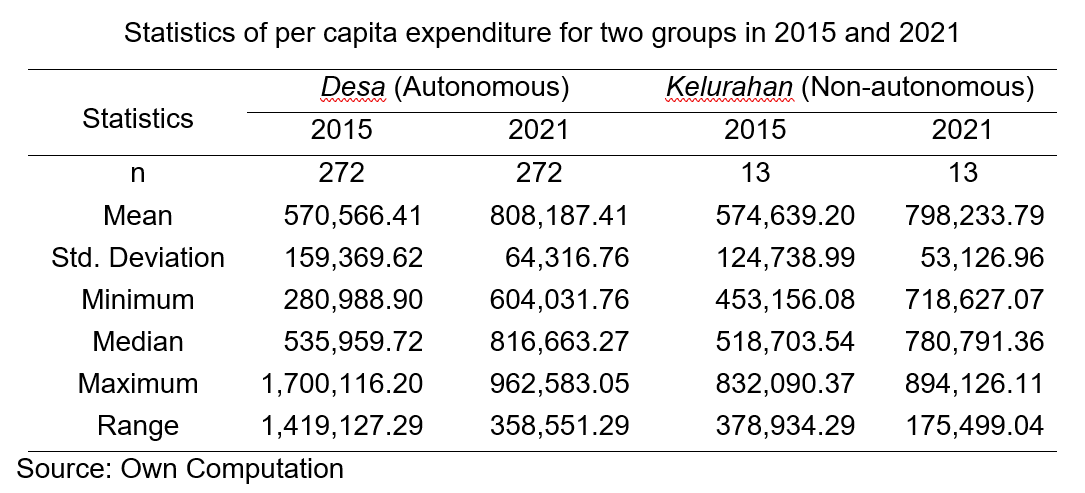Evaluating Indonesia’s Village Autonomy Policy: Utilizing Small Area Estimation with Repeated Cross-Sectional Data
Conference
65th ISI World Statistics Congress
Format: CPS Abstract - WSC 2025
Keywords: diff-in-diff, evaluation, policy, small area estimation
Session: CPS 13 - Small Area Estimation for Policy and Socio-Economic Modelling
Tuesday 7 October 4 p.m. - 5 p.m. (Europe/Amsterdam)
Abstract
In pursuit of equitable development, Indonesia's regional decentralization progresses with the implementation of village autonomy policies. These policies empower villages to govern and develop their communities and territories according to local needs, supported financially by the central government. Designed to enhance rural welfare, the outcomes of this policy have garnered considerable attention and remain a subject of debate. Due to the absence of quantitative data at the village level, previous evaluations have relied on macro indicators, which are inadequate for rigorously assessing the impact of this specific policy. This study aims to investigate the extent to which the village autonomy policy has impacted village-level economic welfare between autonomous and non-autonomous groups, taking Pekalongan Regency, Indonesia as a case study.
Employing a comparative observational approach, this study examines shifts, in community welfare before and after the policy's implementation in 2015 and 2021. Given the lack of village-level indicators to assess welfare, small area estimation was used to estimate per capita expenditure as a proxy for economic welfare. Repeated cross-sectional data from the National Socio-Economic Survey and covariates from the Village Census were used to model the estimates for sampled villages across both periods. Synthetic estimation, utilizing regression coefficients obtained from sampled areas, was then applied to estimate per capita expenditure in unsampled villages. After adjusting the estimated results for 2021 with inflation, changes were compared over time and between groups using difference-in-difference analysis.
The findings indicate significant welfare improvements over the seven years of village autonomy implementation for both autonomous and non-autonomous groups. However, difference-in-difference analysis reveals that the policy's impact on autonomous villages, compared to non-autonomous ones, is positive but not statistically significant. The observed positive change in per capita expenditure may potentially be influenced by other programs or interventions in the villages. Nevertheless, it cannot be conclusively asserted that the policy is ineffective in Pekalongan, as the non-autonomous group might not be entirely independent of other interventions.
Despite this limitation, this novel study provides nuanced insights into the policy's impact at a micro level. By combining small area estimation and difference-in-difference methods across two distinct periods, the methodological approach to evaluating policy impacts is significantly enhanced. This research offers an alternative approach for policy evaluation in the absence of small-level indicators and provides valuable insights for policymakers, researchers, and practitioners aiming to improve rural well-being through effective policy evaluation.
Figures/Tables
The distribution of per capita expenditure across villages, 2015 & 2021

Percentage change in Per capita expenditure

Statistics of per capita expenditure for two groups in 2015 and 2021

The result of difference-in-difference analysis

